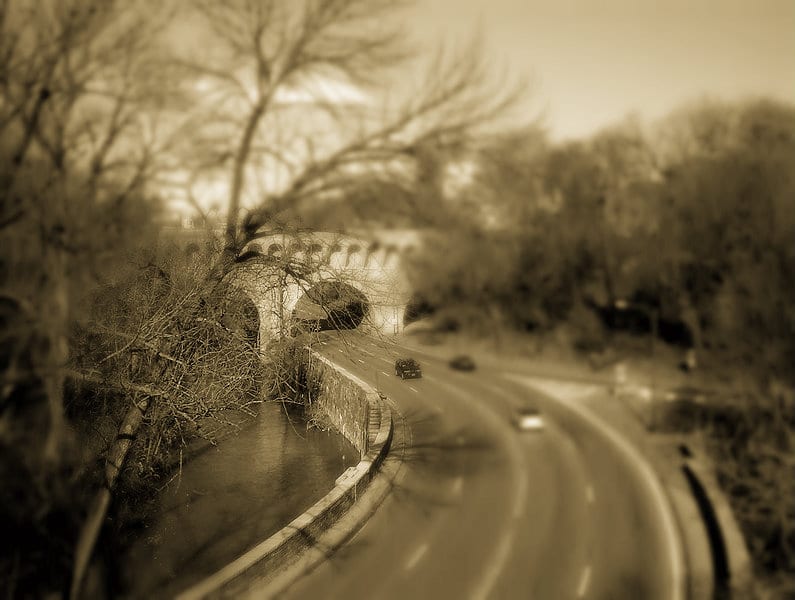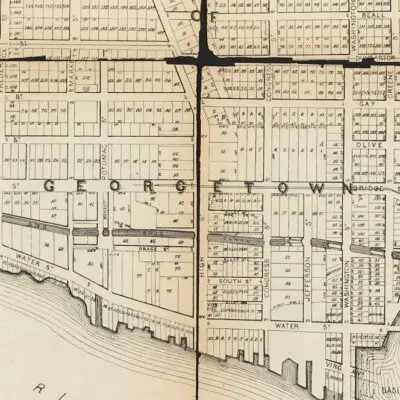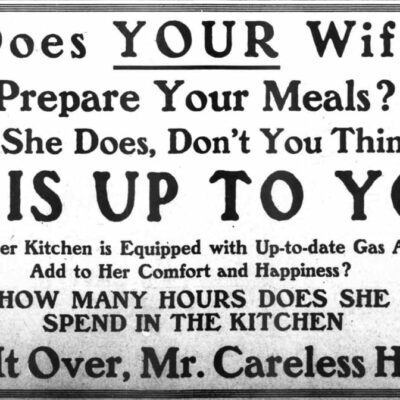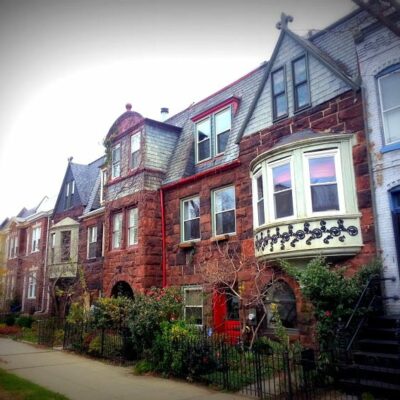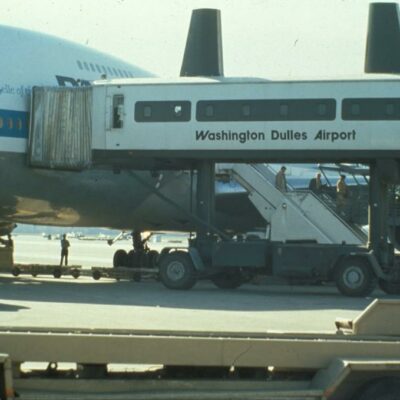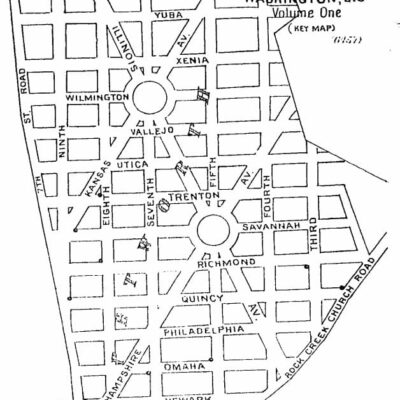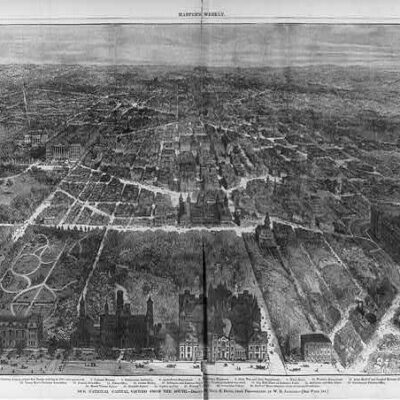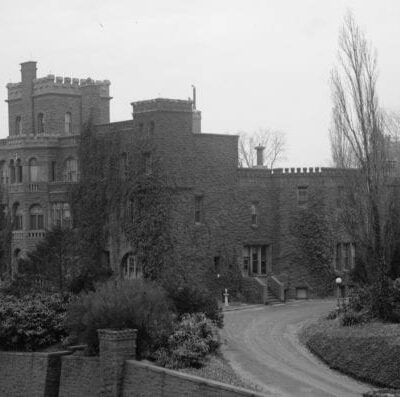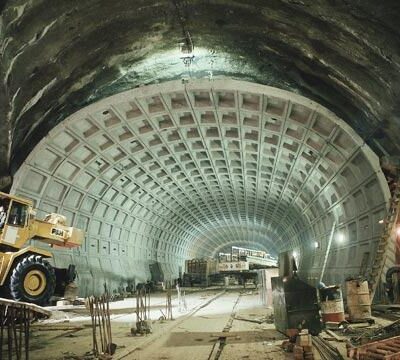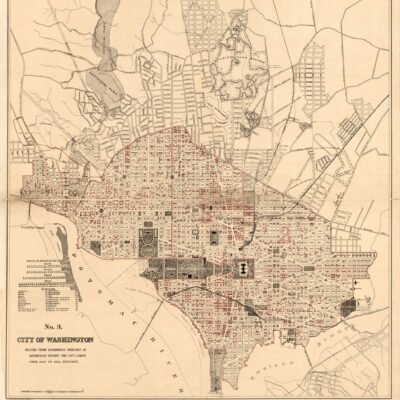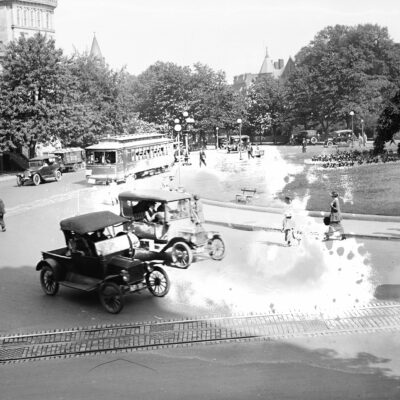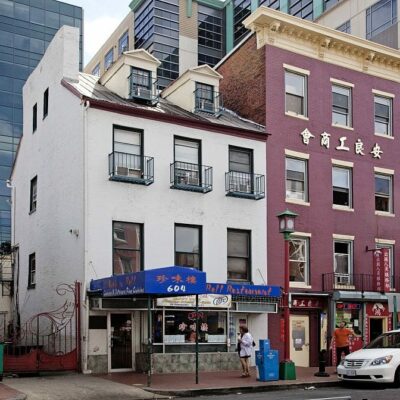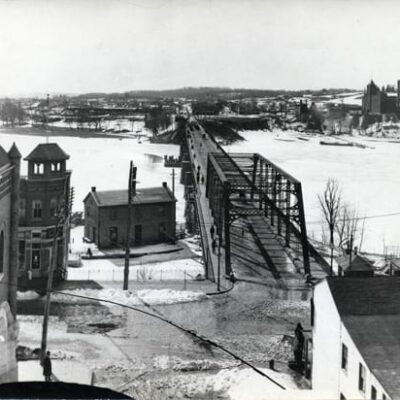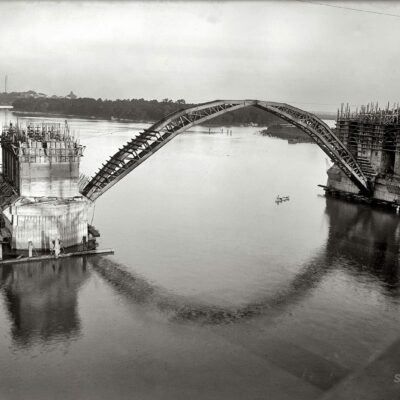This is an awesome find. We dug up a fascinating article in the Washington Post from May 23rd, 1886. This was for a proposed tunnel diverting the creek’s path.
A large impetus for the this plan was to better unite Georgetown to the rest of Washington and secure more valuable city property on top of which to build. One the tunnel was built, diverting the creek’s waters, Rock Creek would be filled in and covered. The estimate was that an additional 50 squares would be secured through this engineering project.
“From what I have seen in the papers,” said Capt. Symonds, when asked by a POST reporter for his opinion regarding the cost and practicability of the proposed Rock Creek tunnel, “I should consider it a perfectly practicable and feasible scheme, and I should think that the benefits resulting would fully justify the outlay necessary.”
“How long would be the tunnel?”
“From the location as described it would require a tunnel about 2,000 feet long with some open cut work at the ends.”
“What would be the cost?”
“Its cost would depend largely on the nature of the rock encountered. It would probably be necessary to arch it over throughout its length and if the excavated rock were suitable in quality it could be used for this purpose. In this case I should estimate the cost of the tunnel, with a sufficient water-way for all floods, to be about $250 per lineal foot. This would make the 2,000 feet of tunnel cost $500,000. Another $100,000 would cover all the open work at the ends, and all engineering expenses, etc. If it was found necessary to use brick for arching the cost would be about $50,000 more. This would make the cost from $600,000 to $650,000, which I believe would cover all expenses for the work proper without including any question of right of way. The excavated material would be used for arching in the form of rubble masonry, not in the form of concrete. The bed of the creek could not be used for a dumping ground. It could not be filled up directly with the excavated material, for it would have to be kept open for the passage of water until the tunnel was completed.
“It is not at all improbably,” continued Capt. Symonds, “that a sufficient amount of good material would be excavated to arch the creek over from the lower terminus of the tunnel to the outlet of the canal. In this way the improvement could be made more far-reaching and beneficial. The creek would be blotted out of sight from Lyons’ Mill to the mouth of the canal. I should think that the best use for the excavated material, beyond that used for curbing the tunnel, would be in building embankments across the valley of the creek connecting the streets of Washington and Georgetown, thus doing away with bridges and uniting the two cities. The spaces between the embankments could gradually be filled in. If properly managed it would be a splendid improvement.”
How fascinating is this? Imagine if this tunnel had been built. Check out the proposed route below.

